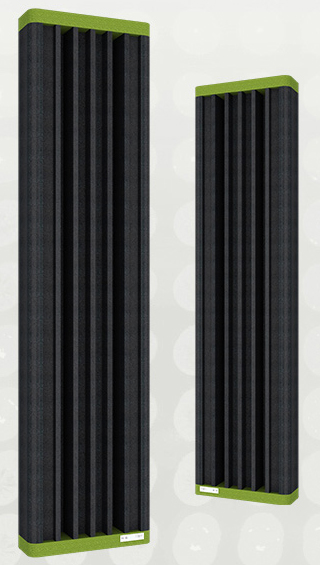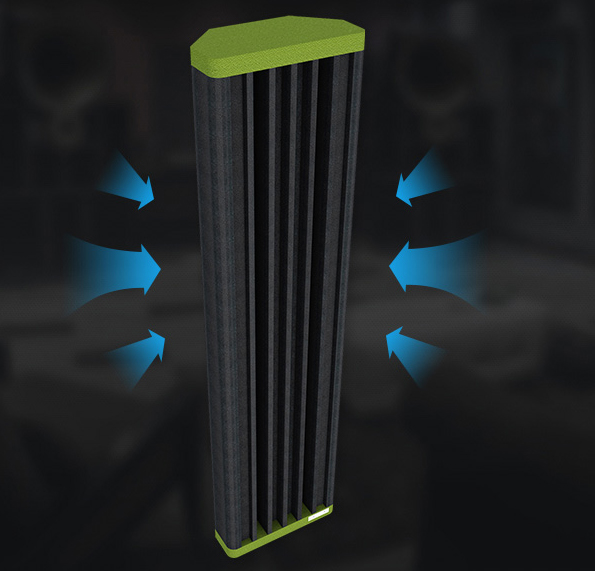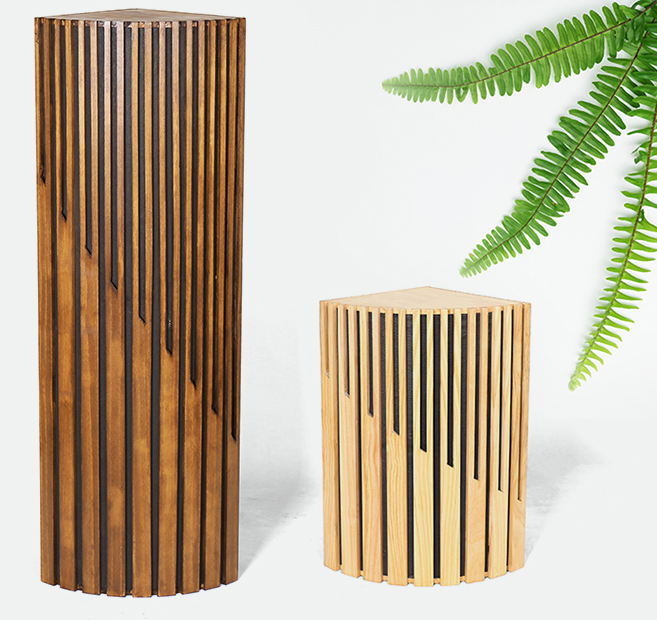Bass Traps
กก
Bass traps are extremely important
elements in the acoustic adaptation. Most rooms have problems with low
frequencies.
Sound waves with low frequencies are very long. For example, the sound
wave with a frequency of 30 Hz is over 11 meters! Such waves easily
pass through the wall and their damping is very difficult. A good bass
trap works from around 50 Hz. Depending on the type, there are elements
that act
only on the sub-band (thanks to the use of a special filter), another
type are broadband bass traps, which are e.g. from 50 Hz to 4000 Hz
work. Finally,
there are the so-called Helmholtz resonators, which are tuned to a
specific frequency. Their structure is quite complicated and their
effect often does not meet expectations.
Resonators are recommended for lovers who want to spend their time
building the solution in a room and making acoustic measurements.
Production and adaptation can practically only be done on site. Pułapki
Basowe Trap Bass
Bass Traps Bass Trap

Construction of bass traps
In the market are bass traps u.a. in cylindrical, triangular and square
shape available. The shape does not affect the effect and is only a
visual aspect. The former,
however, depends on the materials used and their connection. Forms of
foam, which are referred to as bass traps, are often not consistent with
this name.
In order for a material to be able to dampen low frequencies, it must,
inter alia, have a corresponding density. However, most acoustic foams
have a low density which allows such acoustic elements to absorb only
medium and high frequency sound waves. The most popular material
for bass traps is a specially selected mineral wool that can absorb low
frequencies. In addition, placing a perforated sheet or specially
prepared piece of sheet metal in the construction can result in the panel
being able to better absorb a specified frequency range.

Placing bass traps
Low frequencies spread in rooms around. This means that they are not
directional, as is the case for high frequencies. If you stand behind a
speaker,
the bass will be just as audible as in front of the speaker. The
situation is different with medium and high frequencies. Most lows
accumulate in the corners of the room,
both at the joints between the walls and at the wall and ceiling joints.
You should start with the installation of bass traps in the corners
behind the speakers.
Many people wonder how many such items should be placed in the corner.
There is no golden rule for this question. Usually it works best to
attach the
bass traps from floor to ceiling, but even a single bass trap in the
corner of its task does justice to a certain extent. It depends on how
big
the problem is with the low frequencies. For the attachment of bass traps,
the corners that connect the walls to the ceiling are also recommended.
By an appropriate mounting kit, these can be hung there. Can bass traps
only be in the corners of rooms? Certainly not, they can also be in
other places,
but they work best in the corners.

กก
กก